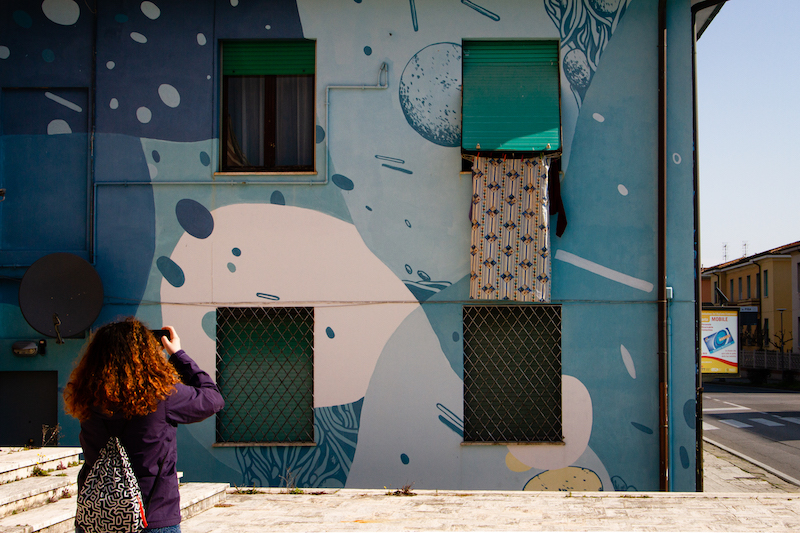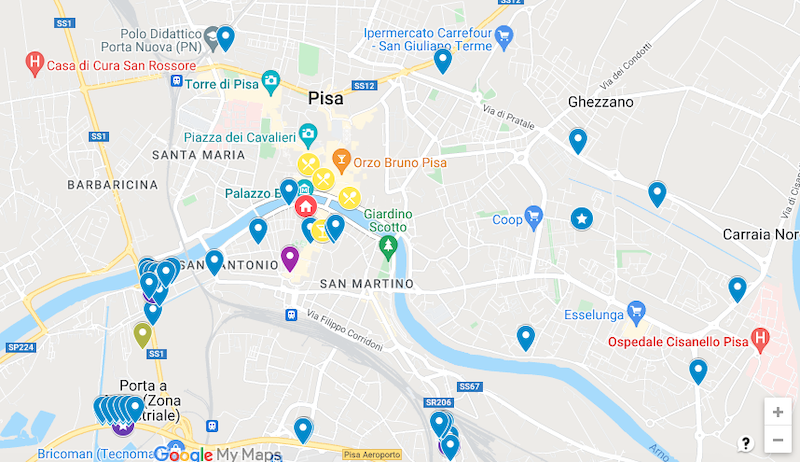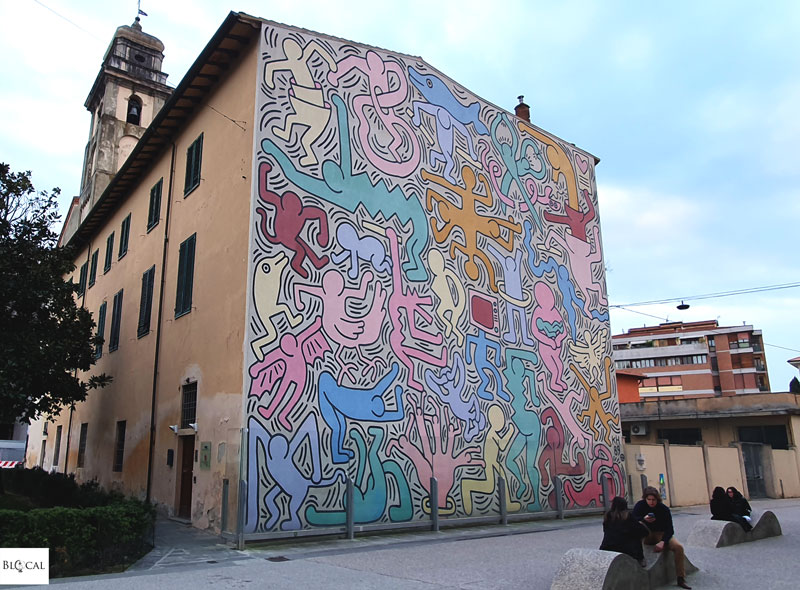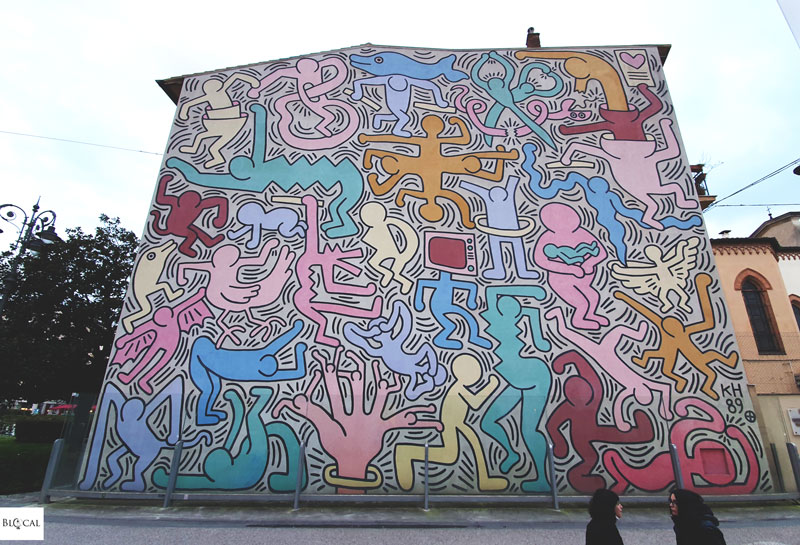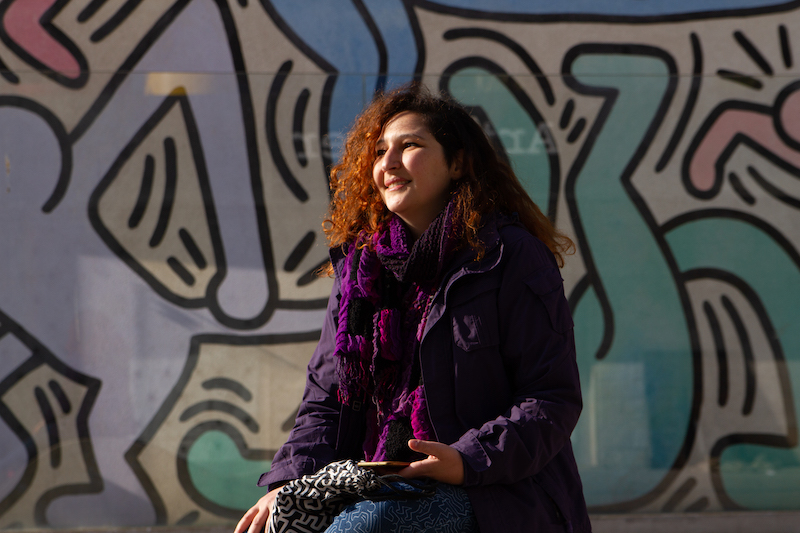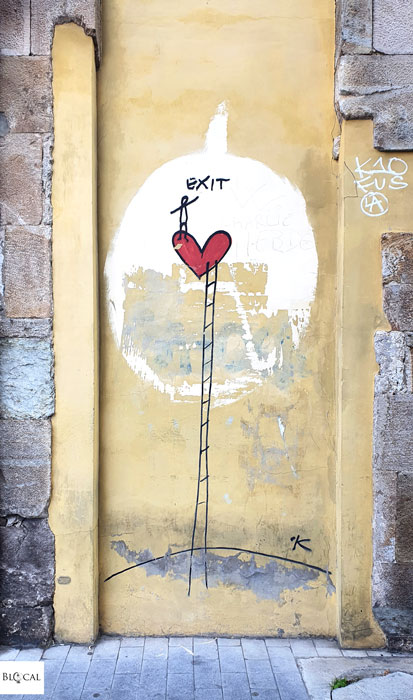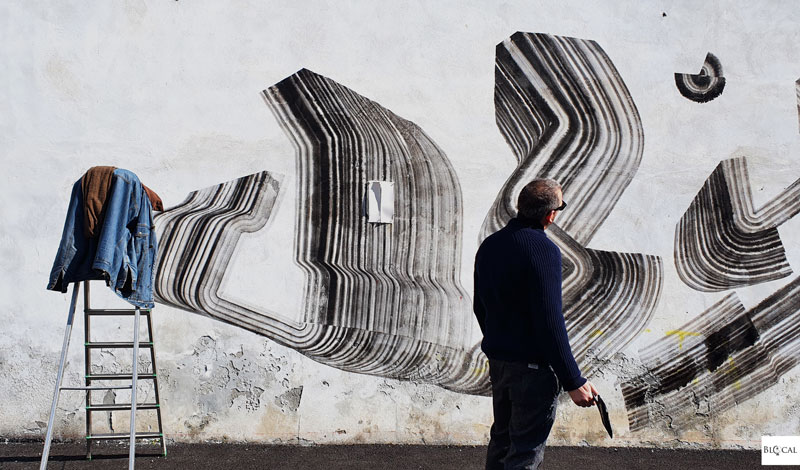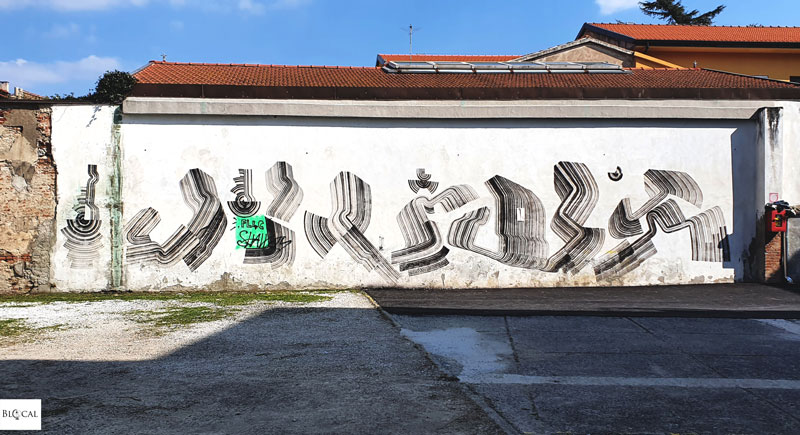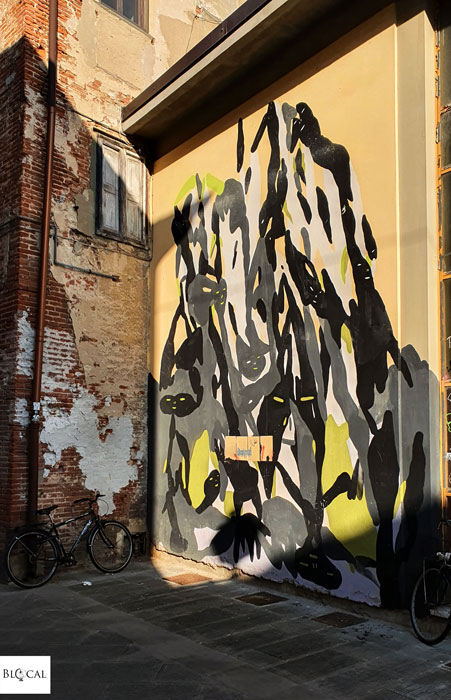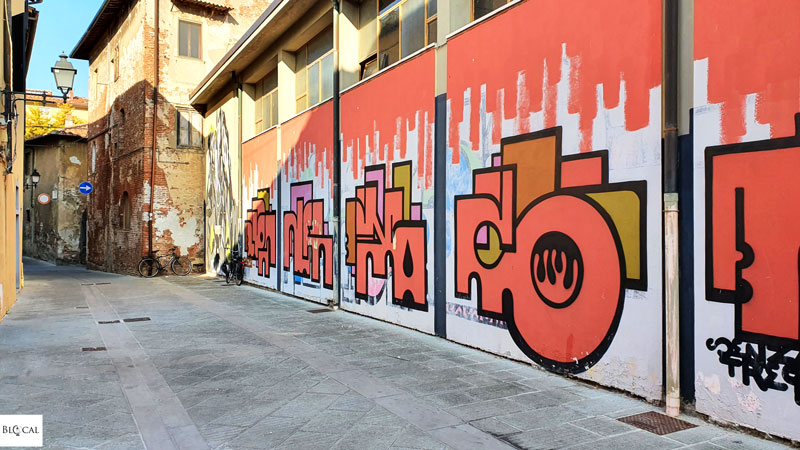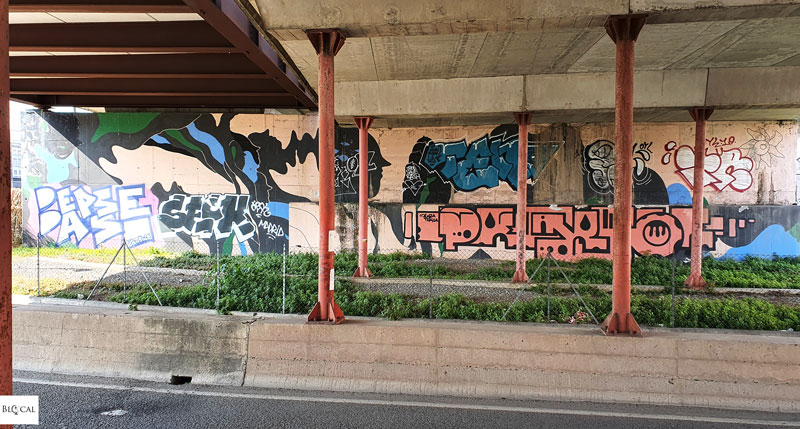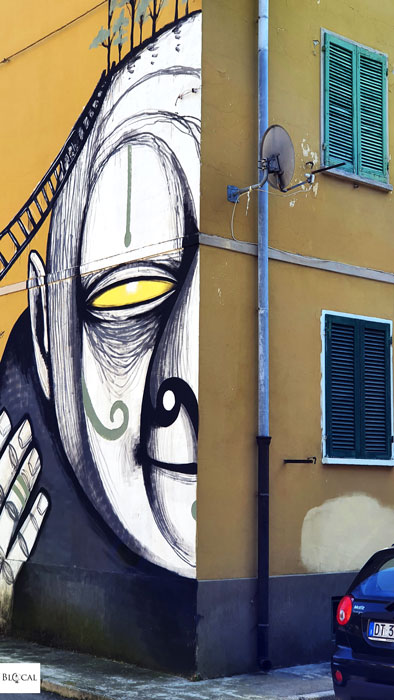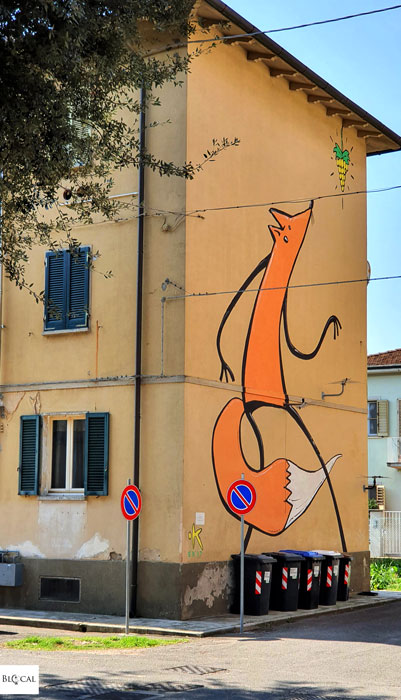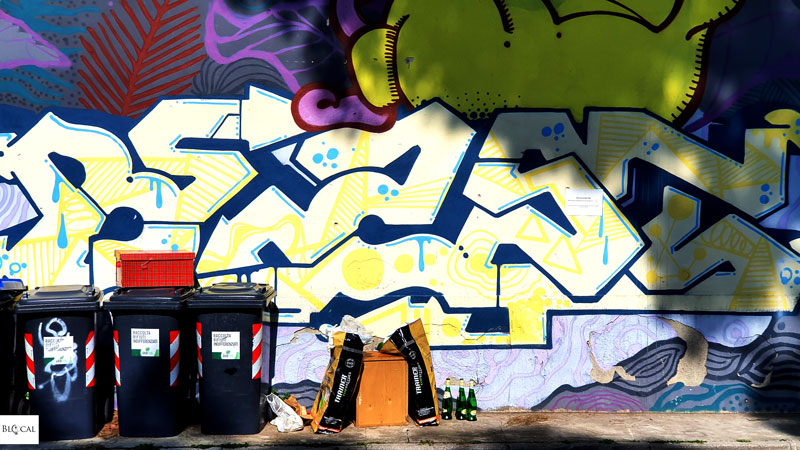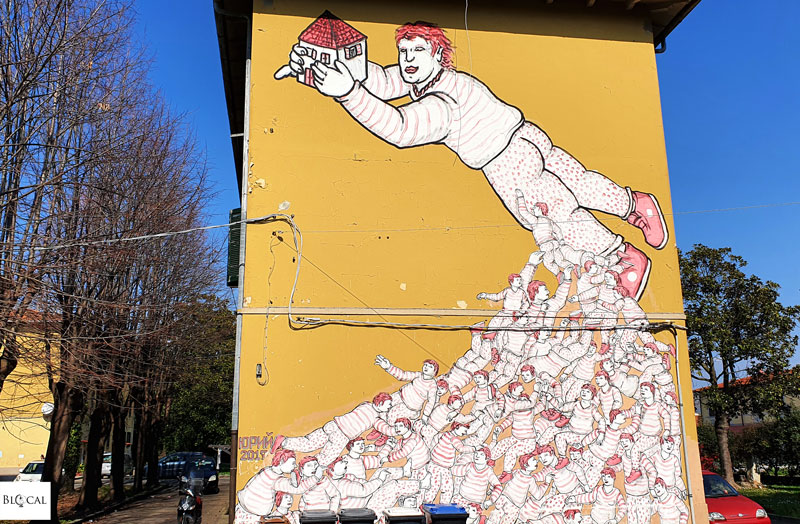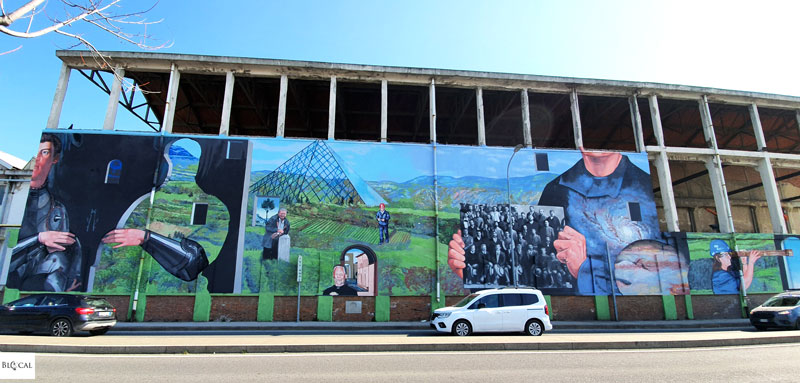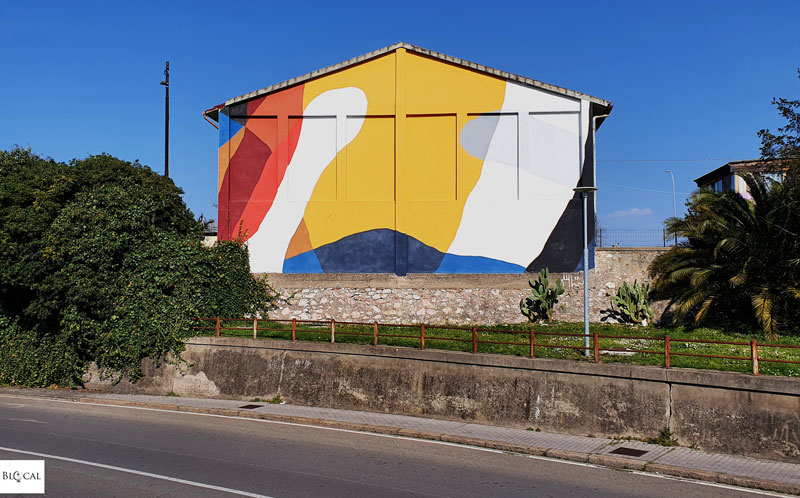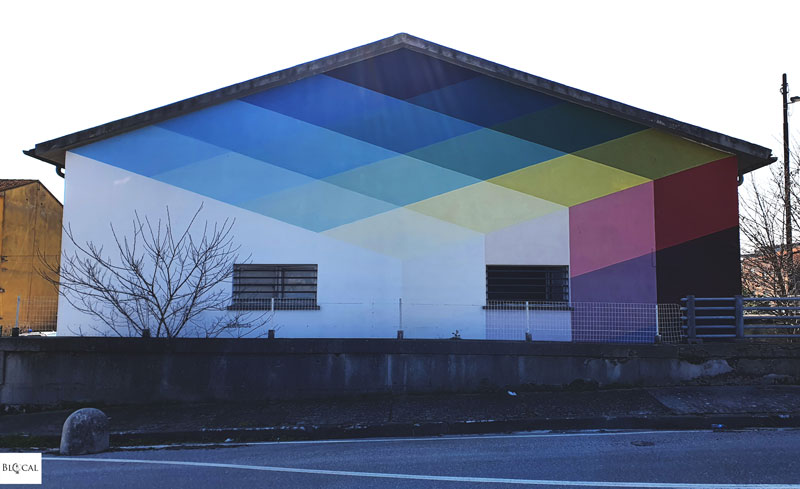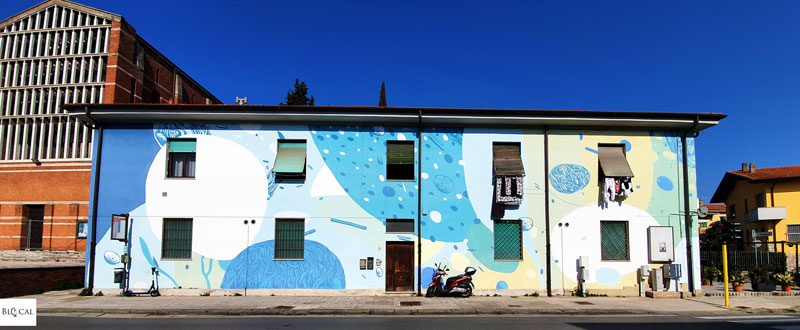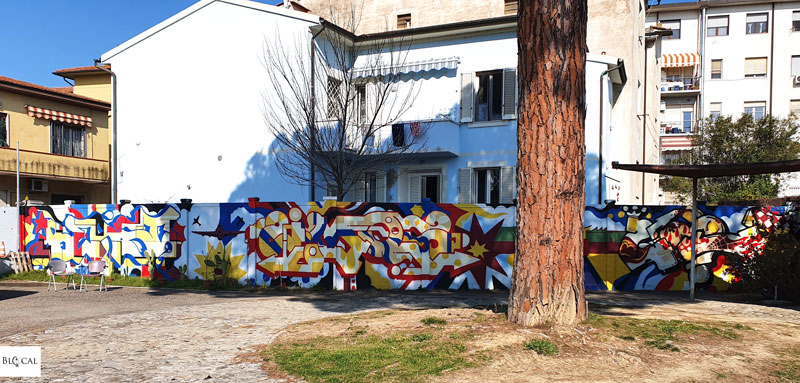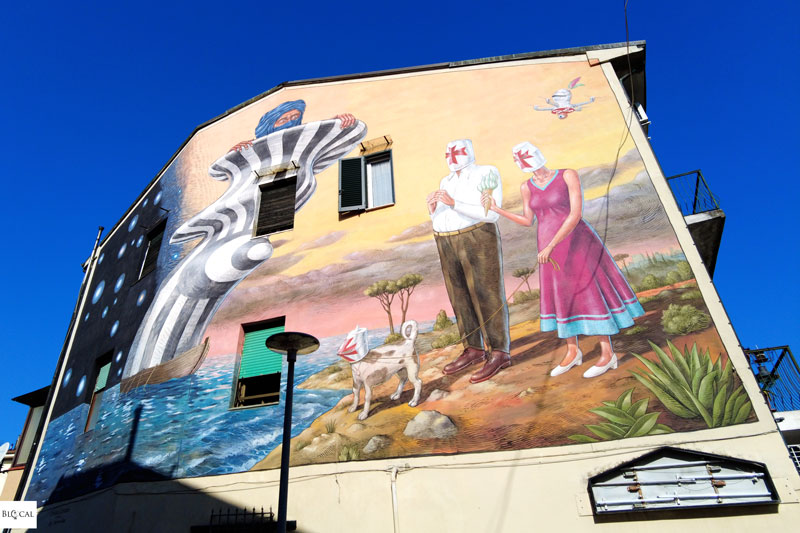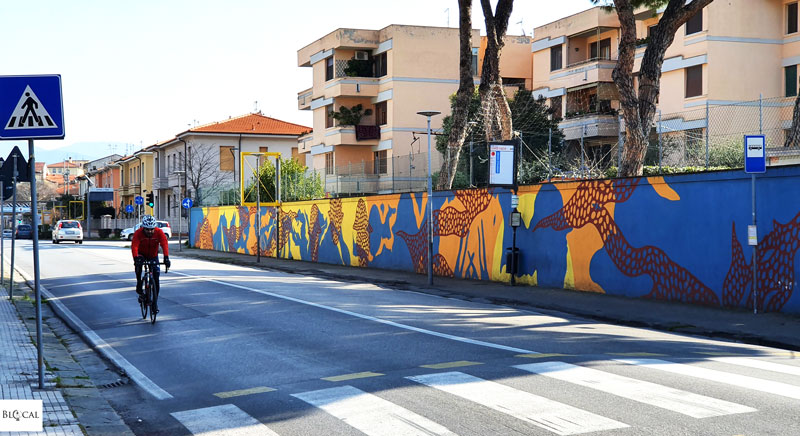Street art in Pisa is quite underappreciated. You might have read that Keith Haring painted his last mural in Pisa, or that in the 1990s Pisa hosted one of the main graffiti events in Europe, which put this small Tuscan city straight on the international graffiti map. And yet, there is still so much more to discover on Pisa’s walls!
So let’s turn away from the Leaning Tower and start exploring Pisa’s underrated urban art collection :)
- Pisa Street Art Map
- The Keith Haring Mural in Pisa (1989)
- Graffiti in Pisa: A Brief History
- Where You Can Find Street Art in Pisa
- Street Art Around Pisa’s City Center
- Street Art at Pisa International Airport "Galileo Galilei"
- A Mural by D*Face in Pisa
- Street Art in Pisa: Sant'Ermete Neighborhood
- Pisa Street Art Festival "Welcome to Pisa" in Porta a Mare Neighborhood
- Custom Travel Itinerary Service
- Beyond the Walls: A Street Art Newsletter
Pisa Street Art Map
Trust me, it’s way easier if you download my Pisa Street Art Map!
The Keith Haring Mural in Pisa (1989)
“I’m sitting on a balcony and looking at the top of the leaning tower. It’s really very beautiful here. If there is a paradise, I hope it’s like this.”
Keith Haring
The one in Pisa is the last mural painted by Keith Haring before his passing away. An artistic testament of sorts, “Tuttomondo” shows the multiple facets of Keith Haring’s creative universe at the height of its expression. Scrolling our gaze from one of the 30 characters to the next, we can read Keith Haring’s ode to life by decoding the dynamic symbols that characterized his artistic production.
From spiritual symbols pointing at the eternal fight between Good and Evil (typified by the yellow angel and the red devil, while the triumph of Good over Evil is represented by the scissors cutting the snake) to the depiction of human qualities like freedom, instinct, loyalty, and purity through the anthropomorphization of animals: the bird, the monkey, the dog, and the dolphin, respectively.
Keith Haring didn’t spare his criticism of contemporary society in this mural. Figures shaped as stairs condemn our ambitions, while the character with a TV instead of the head points out the danger of alienation and misinformation.
Keith Haring’s colorful characters are a metaphor for a society in harmony. The artist’s message of hope is set in the symbols that signify his civil values, such as solidarity – represented by a “Croce Pisana” (Pisa’s Cross) made of four human figures united – and cooperation (the hand with five anthropomorphized fingers).
The harmony between man and nature is crucial to Keith Haring, who often represents this balance with a man holding a dolphin. In addition to that, there’s also a strong condemnation of human-driven environmental disasters, such as the Siamese twins speaking against nuclear catastrophes.
“Tuttomondo” is also the only Keith Haring mural we still have in Italy. Unlike Rome’s municipality, which eventually destroyed not one but two public artworks by Keith Haring, Pisa protects this masterpiece with a public act that paved the way for regulating the preservation of street art in Italy.
Graffiti in Pisa: A Brief History
Pisa’s graffiti scene gained international relevance in the 1990s thanks to the “Panico Totale” graffiti jam, which was organized from 1996 to 2000 in Pisa by the KNM crew (standing for “Kome Non Mai,” which means “like never before”).
The KNM crew gathered graffiti artists living in different cities around Tuscany: FRA32 and OZMO from Pisa, ETNIK from Vinci, ARIS and KRISA from Viareggio, TOMAC from Grosseto, DUKE1 from Florence, and ZED1 from Certaldo.
They painted together in train yards scattered all around the region, because in the Italian province, the lack of a metropolitan rail system redirected local writers towards long-distance trains. These writers could communicate with other cities, including Milan and Rome (the only two cities with a metro system) through the national railway system. Graffiti’s ultimate goal is to be seen, and Tuscany was the perfect location for that. It is crossed by trains running along the Tyrrhenian coastline and trains going toward Bologna and the Adriatic coast.
The KNM crew became an important reference point throughout Italy for transferring onto trains a stylistic approach that generally belongs in the Hall of Fame, because painting in deposits in the middle of nowhere allowed their actions to take place undisturbed. Working on the same panels for hours, they came up with compositions based on complex letters and figures.
Another accomplishment of the KMN crew is having turned the small Tuscan city of Pisa into an international attraction for graffiti artists. Alongside leading Italian crews, the first edition of the “Panico Totale” jam featured NYC legend PHASE2 as a special guest. Unfortunately, PHASE2’s piece in Pisa is long gone. However, the city still is a strategic point on the European Graffiti Map. Over the years, it attracted renowned international graffiti artists like Zedz, Oker, Loomit, Daim, Toast, CanTwo, SatOne, Egs, and many more.
Finally, in 2014, the municipality formally established several Hall of Fame locations around Pisa (areas where writers can paint without legal implications), thus recognizing graffiti as a proper art form that deserves its own space in the city.
Hall of Fame in Pisa: Where can you legally paint in Pisa?
Trust me, it’s way easier if you download my Graffiti and Street Art Map of Pisa!
Where You Can Find Street Art in Pisa
Street Art Around Pisa’s City Center
The pastel-hued walls of the picturesque streets in the city center of Pisa are dotted with spontaneous street art, from the stylized men by Exit/Enter to the Caravaggio-inspired stencil by C215 on a mailbox in Piazza Delle Vettovaglie.
Among larger street art pieces in the city center of Pisa, I can’t help mentioning the mural I witnessed coming to life in front of my eyes: the abstract piece by 2501 in the “Toniolo” schoolyard.
2501’s art practice is the visual representation of the time taken to paint a piece. Rather than an aesthetic goal, the artist researches the causality and the pictorial exploration of his gesture. The unplanned black line gains meaning as it unfolds in relation to the specifics of the wall’s surface.
The artist approached the unprimed wall in the “Toniolo” schoolyard with black ink, which “read” the wall, as ink is absorbed unevenly depending on the wall’s texture. The goal isn’t the perfect composition but replying pictorially to a given situation, clear derivation from his graffiti background.
Enjoy my Reel of 2501 live painting in Pisa:
Two more street art pieces in Pisa’s city center were painted in 2014 next to each other on the outside wall of “Zerboglio” School in Vicolo Scaramucci, on the occasion of the urban art event “Indoor/Outdoor.”
The first piece from the left is by Giorgio Bartocci. His spontaneous and gestural approach expresses the drama of our time when the individual loses their identity in a globalized society.
Next to it there’s a graffiti piece by Linea Piatta (Massimo Sospetto), characterized by clean, sharp lines that recall vector graphics.
Street Art at Pisa International Airport “Galileo Galilei”
Still realized for the “Indoor/Outdoor” urban art project are the two large-scale murals on the underpass in front of Pisa airport by two original members of the KNM Crew, now established post-graffiti artists: ARIS and ETNIK.
Unfortunately, Aris‘ mural is ruined by water leaking from above, while the bottom part of the mural is all bombed, so the artist’s typically surreal profiles have almost disappeared. However, I love that the local writers added layers to Aris’ characteristic layering of the image, which develops along with the artist’s idea of time’s mutability.
Etnik‘s mural is in better condition, albeit a bit musty from water leaks. We can still perfectly see the evolution of the letters of his graffiti name into floating geometric shapes that behave like architecture.
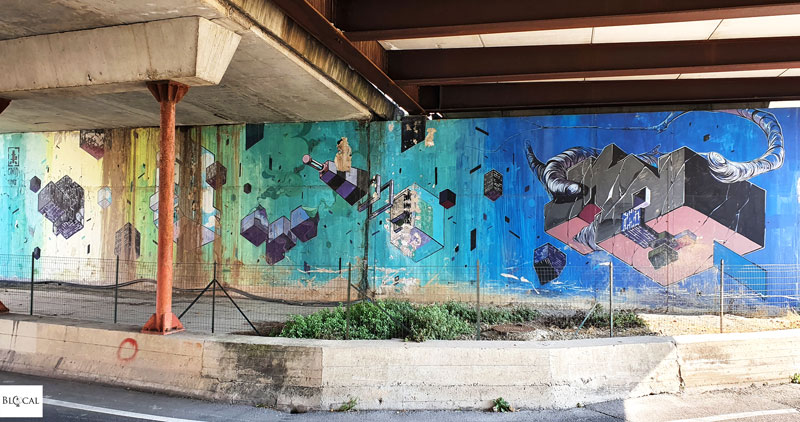
A Mural by D*Face in Pisa
Alongside international graffiti legends, Pisa was also able to attract street art superstars. In 2009, D*Face arrived in Pisa to celebrate the 20th anniversary of Keith Haring’s “Tuttomondo” mural. On the former monastery of San Michele Degli Scalzi (now a cultural center), D*Face painted a large-scale mural inspired by Keith Haring’s stylized figures.
Street Art in Pisa: Sant’Ermete Neighborhood
Sant’Ermete is a social housing neighborhood in the outskirts of Pisa, where residents stepped in and began taking care of the public spaces that the town’s municipality has neglected for far too long.
In Summer 2017, they decided that besides cleaning the communal garden and fixing the buildings, they also wanted to beautify the area to tackle the desolation.
Crowdfunded by the local community, a group of street artists created twelve large-scale murals telling stories of fighting, commitment, hope, and dreams: the perfect example of a grassroots festival leading to a renovation supported by the whole community.
Pisa Street Art Festival “Welcome to Pisa” in Porta a Mare Neighborhood
In the same year, Pisa hosted the first edition of the public art festival “Welcome to Pisa,” curated by Gian Guido Maria Grassi and “stART Open Your Eyes.”
The street art festival welcomed to Pisa five artists, commissioning them two public artworks each: one on a wall in the industrial neighborhood of Porta a Mare and one on a pillar under the overpass Firenze-Pisa-Livorno. Unfortunately, the artworks on the concrete pillars are now fenced-off because the public space became a private area for a shipbuilding company. However, it’s still possible to enjoy the murals around Porta a Mare neighborhood, whose stories revolve around the festival theme of “water,” a primary element in the area.
The Italian-American artist Gaia created a wide mural depicting the story of the neighborhood and the identity of its community, from the strategic location along the canal to the social fabric of a working-class neighborhood that still hosts a few factories.
Moneyless painted one of his abstract murals using four symbolic colors: red and white, which we find in the city’s flag, and black and blue, which are the colors of the local football team.
Yet another abstract mural based on a site-inspired color palette is the one by Alberonero, who picked the boat’s colors representing the district during the boat race Palio di San Ranieri: blue, green, yellow, and red. Alberonero’s optical compositions drew inspiration from minimalism and the interpretation of the emotions generated by colors in a specific urban context based on the repetition of geometrical shapes and chromatic variations.
“River Stories” is a mural painted by Tellas. His compositions are made of the abstraction of natural elements and textures; in this case, elements related to water and the nearby river.
(The fifth artist was OZMO with his portrait of Galileo Galilei, which unfortunately was behind some scaffolding when I visited).
One year later, the Welcome to Pisa street art festival invited six more artists to paint one mural and one pillar each.
Graffiti writers IMOS, BEAST, and 2OLD created a collaborative piece featuring the evolution of their style alongside some figurative elements to represent the neighborhood’s history. Seen through the four natural elements, these milestones are: the canal’s water, the earth supplying the factories, the fire of the bombing that happened in 1943, and the air furrowed by airplanes from the nearby airport.
Ukrainian artist AEC Interesni Kazki painted “Knights & Saracens,” a journey through the centuries reflecting on the history of the Mediterranean Sea. A graffiti pioneer in Eastern Europe, AEC now specializes in allegorical tales on city walls, like the legend of the young heroine Kinzica, who in 1004 saved Pisa from the Saracen invasion.
Last but not least, a 60-meter long mural by Aris boasts on the main road crossing the neighborhood. In between figurative and abstract, his characters are constantly changing according to the different layers of the image.
All these street art projects in Pisa (and especially “Welcome to Pisa” and the grassroots festival in Sant’Ermete) have the active participation of the local community at their core. Street art might have demanded some stealthiness in the past, but today it is a fully fledged live performance in which artists paint in front of residents and curious alike. Over the decades and across the continents, the accessibility of street art has conquered a new audience made of people who would typically not go to art museums while they engage with art in the streets of their city, as hoped for by Keith Haring himself.
“My hope is that one day, the kids who spend their time on the street will get used to being surrounded by art and that they can feel at ease if they go to a museum.”
Keith Haring
Download my Pisa Street Art Map to find these (and many more) murals in Pisa!
Watch my vlog from Pisa!
